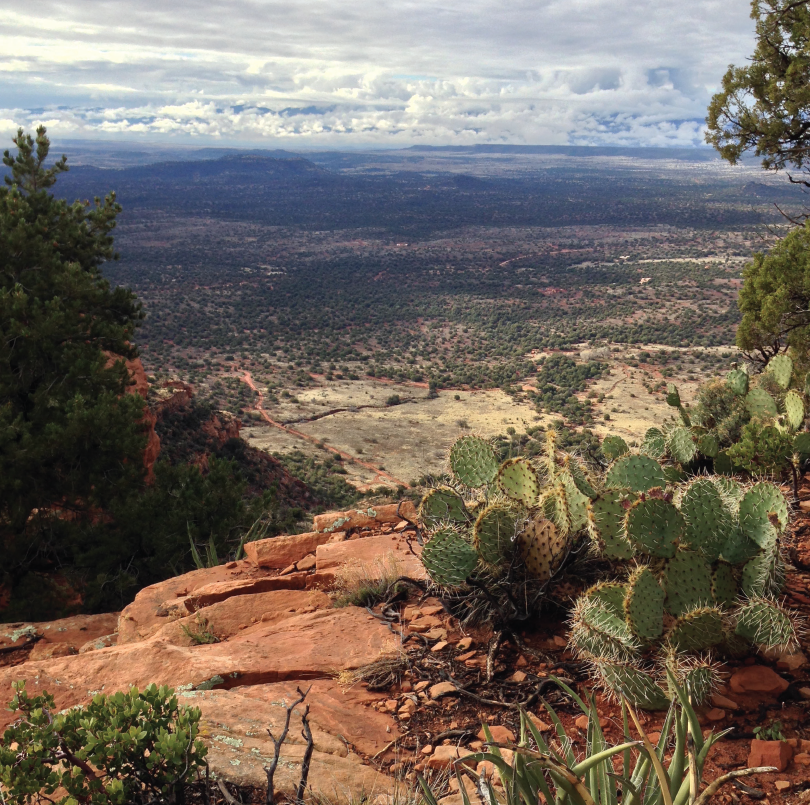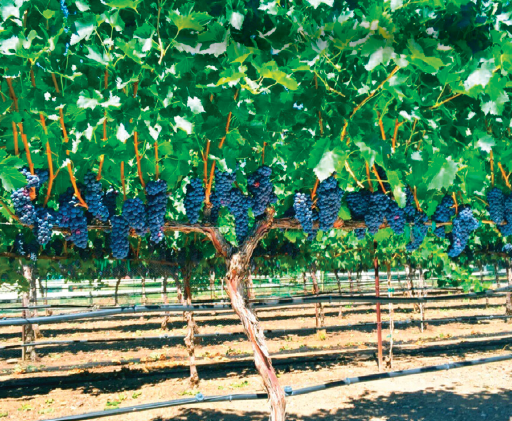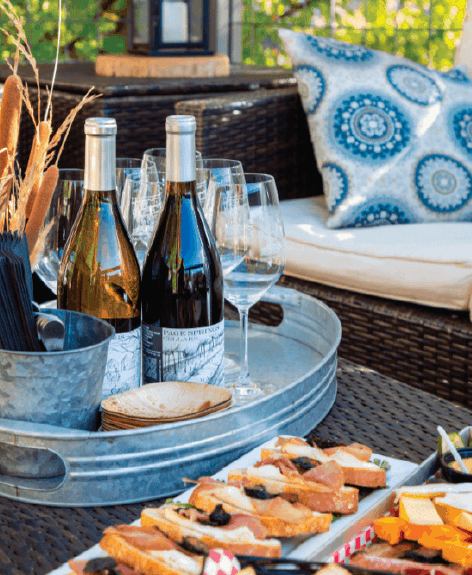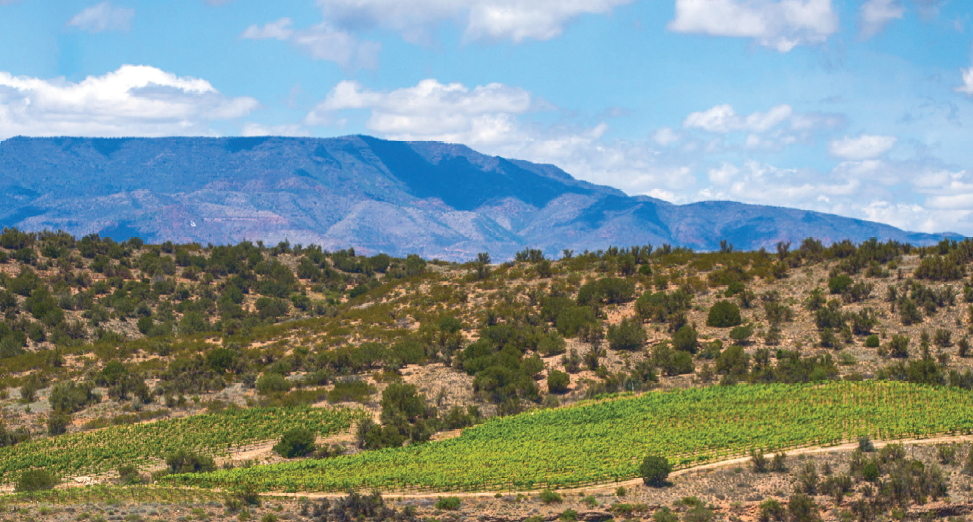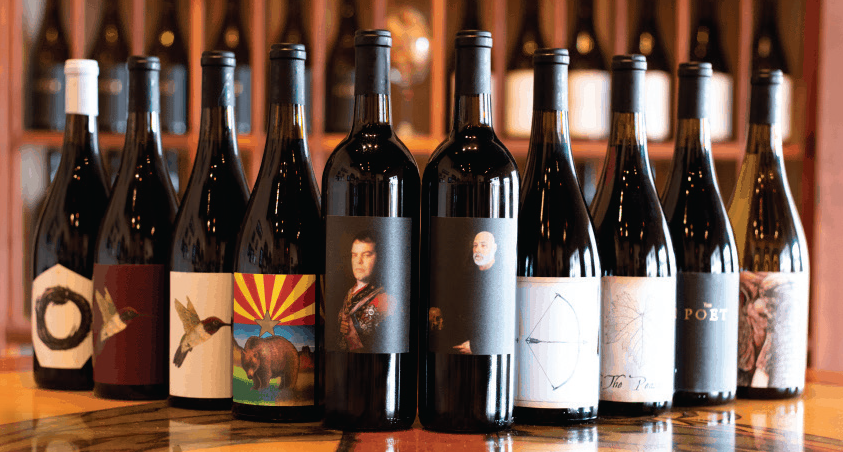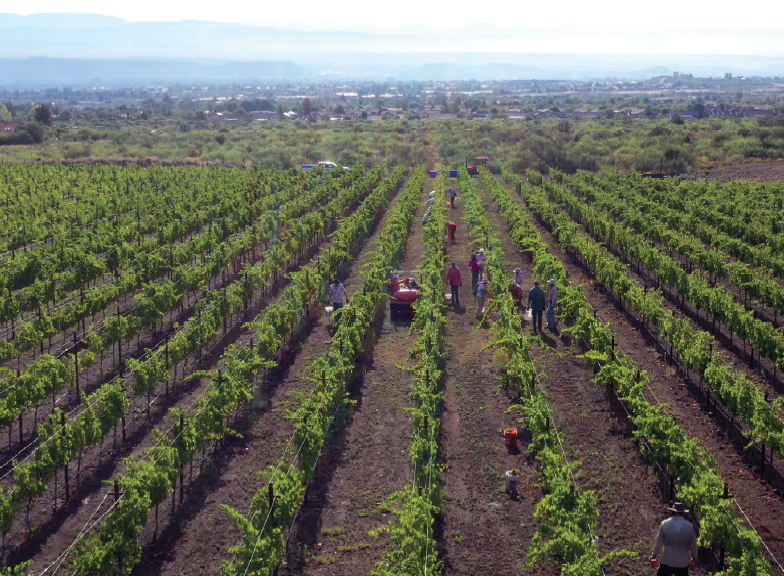No matter the wine, the region from which it comes took strides to fill that glass. In the New World of wine, the likes of Napa Valley didn’t happen overnight. Successive, wide-net planting of different grape varieties by immigrants in the 1800s, followed by setbacks during Prohibition, and rebuilding and replanting after that difficult period brought Napa Valley to where it is today. Growth and recognition take time, and all winegrowing regions must start somewhere.
For the Verde Valley AVA in Arizona, the state’s newest and third official winegrowing appellation, grape growers and winemakers are very much in the early stages of understanding which grape varieties grow best. And while the verdict is still out, the aromatic whites show a lot of promise. Visitors to the region can explore these aromatic white wines at the eclectic collection of wineries and tasting rooms along the Verde Valley Wine Trail and enjoy a variety of wine tasting experiences that feature varietals grown across the state.
THE VERDE VALLEY’S STORIED HISTORY
Grapevines originally planted in Arizona by Spanish explorers date to the mid-16th century when missions planted vineyards for sacramental wine. Much like California, grape growing was abundant until Prohibition. In 1915, absolute prohibition came to Arizona five years before federal Prohibition came into effect. While many wine producers in California were still able to make sacramental wine and keep their vineyards, Arizona saw no such grace. Under state laws, all production, sale, ownership, possession, and consumption were completely outlawed—leaving Arizona to abandon winegrowing for nearly half a century, well beyond the federal repeal of Prohibition.
Gordon Dutt, soil scientist and professor from UC Davis, came to the College of Agriculture at the University of Arizona in 1970 and reinvigorated the wine scene by testing soils, planting vines, and applying for grants to conduct research. In 1976, his studies helped pass a bill that allowed winemaking to return to Arizona—albeit still with significant restrictions on the selling and shipping of products. In 2005, a Supreme Court case eliminated the state’s restrictive selling, shipping, and business regulations. And in 2006, an additional state bill was passed with measures that allowed the Arizona wine industry to initiate regrowth.
VERDE VALLEY GROWTH + TERROIR
The recent growth in the Verde Valley has been exponential. In the early 2000s, the region had only a handful of vineyards. Today, there are 19 commercial vineyards farming more than 136 acres of wine grapes and 25 tasting rooms. In addition, its proximity to the much-traveled town of Sedona has significantly contributed to the region’s development of multifaceted wineries and tasting rooms, which offer a wide array of activities in addition to traditional wine tasting.
Outside of wine tourism, grape growers and winemakers are attracted to the Verde Valley because of the “diversity of soil composition and acclimation to the sun,” said Corey Turnbull, owner and winemaker of Burning Tree Cellars. “Additionally, due to our distance from marine influence and our closeness to the equator relative to most winegrowing regions, we are forced to grow at elevation in Arizona, generally between 3,500 and 5,000 feet. In that sense, the Verde Valley is right in this ‘goldilocks’ zone.”
Like many other great winegrowing regions, the extreme diurnal temperature shifts matter. In the Verde Valley, they range from nightly average lows of 25 degrees in winter and daily average highs of 100 in summer. In the hands of a knowledgeable viticulturist and a talented winemaker, this terroir is what allows Verde Valley producers to craft wines with acidity and appropriately ripened profiles. Soil composition also comes into play and varies across the region. “The Verde Valley contains calcareous and alluvial soils, with traces of limestone,” said Maynard Keenan, owner and winemaker of Caduceus Cellars. Among the benefits of these soil types are water retention, fertile organic matter, and the aptitude to produce wines with ripeness, acidity, and the ability to age.
Turnbull said it best when he stated, “I am excited about what we can offer now, but more so for what the future will bring.” Despite the Verde Valley’s youth, the terroir is promising, and the region will be one to watch—particularly for its aromatic whites, which show quite nicely.
VENTURING ACROSS THE VERDE VALLEY WINE TRAIL
Page Spring Cellars offers a nice collection of wines. Visitors can choose from a tasting flight of five wines for $12 or a reserve tasting flight of five wines for $25. By the glass and by the bottle purchases are available, and they boast an impressive bistro menu with tapas, cheeseboards, paninis, pizzas, salads, and more. One of their most notable whites is a unique hybrid variety called Traminette. This highly aromatic white grape is a cross between Gewürztraminer and Joannes Seyve, bred at the University of Illinois in 1965; it shows well in its Verde Valley expression at this focused estate with vibrancy, freshness, and welcomed acidity on the palate. Flavors of tangerine, white flowers, and a kiss of residual sugar make this balanced white a crowd-pleaser.
The Page Spring Cellars property is classic Arizona with a desert landscape of dry hills, lush flora and fauna banking the nearby Oak Creek, and views of youthful estate vines. Plenty of picnic tables and lounge seating on the spacious deck offer a welcoming space for guests to get to know Verde Valley wines over a tasty lunch with friends and family. For those looking for other fun things to do, an onsite art gallery of local artists is free for viewing. // www.pagespringscellars.com
Burning Tree Cellars is in Old Town Cottonwood, what locals refer to as the heart of Verde Valley wine tasting. Old Town Cottonwood brings tons of historic charm, plenty of shopping and dining, and tasting rooms to enjoy wines from the Verde Valley and beyond. Of note is their 2020 Roussanne with pleasant stone fruit and honeydew aromas. On the palate, this medium-bodied white shows flavors of peach and apple wrapped up in bright acidity and a bit of sweetness.
With more than a dozen wines to taste—and each bottle designed with an original piece of art—this eclectic collection offers several red and white blends, as well as some single-varietal bottlings. // www.burningtreecellars.com
Caduceus Cellars is located on the western side of the Verde Valley Wine Trail in Jerome, a historic copper mining town. A bit more off the beaten path, the Caduceus Cellars tasting room makes for a great destination if a leisure wine tasting experience with some truly unique wines is at the top of the list. Crafted by Tool front man Maynard Keenan, the 2018 Garnacha (Grenache) from Caduceus tastes like a wine from another era. This is a wine for Old World palates and those with a penchant for rare finds. Its distinct expression is derived from early picking, whole cluster wild fermentation, extended maceration, and aging in concrete eggs. This winemaking process gives it a bouquet of dried fruit, and its palate is light in style and body, with medium tannin, bright acidity, and dried strawberry and cherry flavors. Much like his music, this wine doesn’t fit into a traditional mold, and the artistry shows in this bottling. // www.caduceus.org
The Southwest Wine Center at Yavapai College is the local educational resource for growing grapes and making wine in Arizona. With hands-on education in enology and viticulture, student winemakers craft wines each year as they get to know the local terroir, work with different varietals, and trial winemaking practices in the cellar. Visitors who want to be at the forefront of the Arizona wine scene can check out the up-and-coming winemakers and viticulturists of the region by tasting the impressive student-made wines at the Southwest Wine Center tasting room in Clarkdale. The 2018 Aglianico shows well from this new generation of Arizona oenophiles. It’s made in its traditional Italian style with ripe dark fruit and noticeable tannins. Guests can enjoy tasting flights, wines by the glass or bottle, and take a tour. Reservations are required, wine tasting flights are $12, and indoor and outdoor seating is available. // www.southwestwinecenter.com
For more information on visiting Arizona’s Verde Valley wine scene, travelers can look to the Verde Valley Wine Trail at www.vvwinetrail.com.

